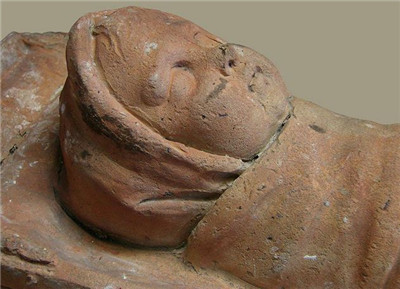8、Dies Lustricus
凈化日
Just as it is in our society today, the birth of a new child was seen as a joyous event, one which brought with it a number of interesting traditions. The dies lustricus, or “day of purification,” was an eight- or nine-day period after birth, which carried with it special meaning for the newborn. Healthcare and technology being what they were back then, a large percentage of childrendidn’t make it past one week, and the Romans felt that a child wasn’t officially a part of the family until the dies lustricus had passed
正如如今的社會習慣,人們普遍認為嬰兒出生是一件令人歡快的的大事,因此隨之而來的有些有趣的傳統習俗就這樣逐漸形成了。易招致死亡的日期或者說凈化日是指出生后八九天這段時期,他們認為這幾天對新生的嬰兒是非常重要的。當時的醫療保健技術水平比較落后,大多數的嬰兒都活不過一周,所以羅馬人普遍認為只有這個孩子經歷了凈化日這段時期后才能真正的將他們視為家人。

Various rites were performed leading up the final day, including the laying of the baby on the ground and its subsequent raising to the sky by the father. (This was supposed to signify the father’s recognition of the child as one of his own.) At the conclusion of the dies lustricus, a baby was officially given a name, which is why babies who died early were left nameless. A special amulet—bulla for boys and lunula for girls—was also given to them during this period and it was meant to protect them from evil forces
凈化日的最后一天前各種儀式上演著,包括把嬰兒放在地面上然后孩子的父親把孩子高舉向天空。(據猜測這個習俗可能是檢測嬰兒的父親是否認同這個嬰兒是自己的。)在凈化日結束時,這個嬰兒才會被正式的賜予名字,這就解釋了為什么早夭的嬰兒是沒有名字的。同時在儀式期間他們還被賜予了特殊的護身符——男孩兒的布拉式垂飾,女孩兒的新月形吊飾,這些護身符能夠保護他們免受惡魔的侵害。













